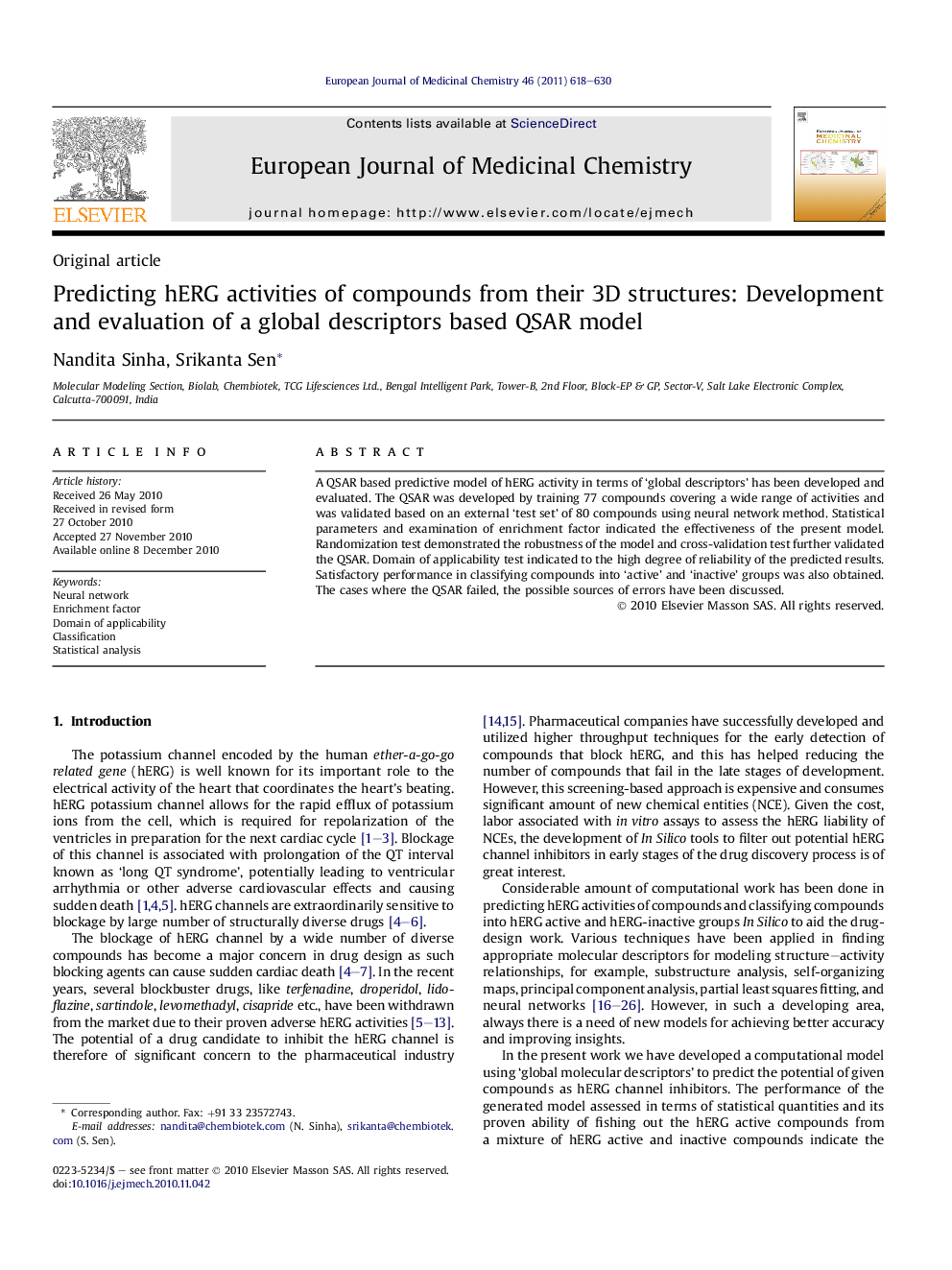| Article ID | Journal | Published Year | Pages | File Type |
|---|---|---|---|---|
| 1397625 | European Journal of Medicinal Chemistry | 2011 | 13 Pages |
A QSAR based predictive model of hERG activity in terms of ‘global descriptors’ has been developed and evaluated. The QSAR was developed by training 77 compounds covering a wide range of activities and was validated based on an external ‘test set’ of 80 compounds using neural network method. Statistical parameters and examination of enrichment factor indicated the effectiveness of the present model. Randomization test demonstrated the robustness of the model and cross-validation test further validated the QSAR. Domain of applicability test indicated to the high degree of reliability of the predicted results. Satisfactory performance in classifying compounds into ‘active’ and ‘inactive’ groups was also obtained. The cases where the QSAR failed, the possible sources of errors have been discussed.
Graphical abstractA predictive model of hERG activity was developed and evaluated. Statistical parameters and enrichment factor indicated the model’s effectiveness. The test with randomized experimental data demonstrated its robustness.Figure optionsDownload full-size imageDownload as PowerPoint slideResearch highlights► An effective QSAR in terms of global molecular descriptors has been developed and analyzed. ► The QSAR predicts well the hERG activities for varieties of compounds from its 3D structures. ► Testing the domain of application indicated that the prediction of the QSAR is mostly reliable. ► Enrichment in the results obtained by the QSAR has been demonstrated explicitly. ► Cross-validation and randomization test demonstrated the robustness of the present QSAR.
